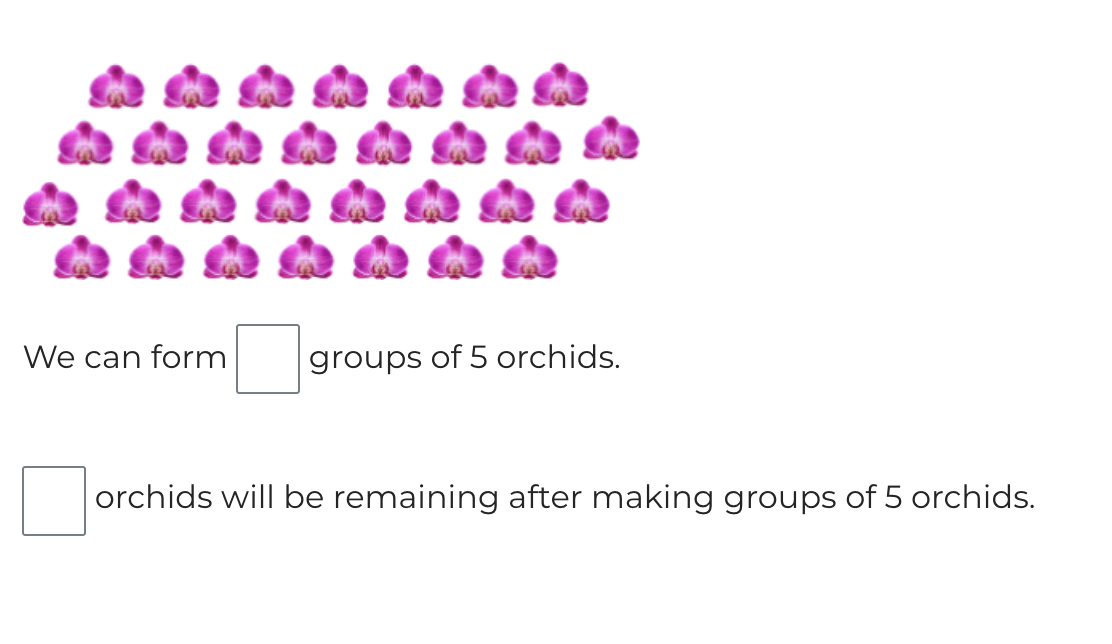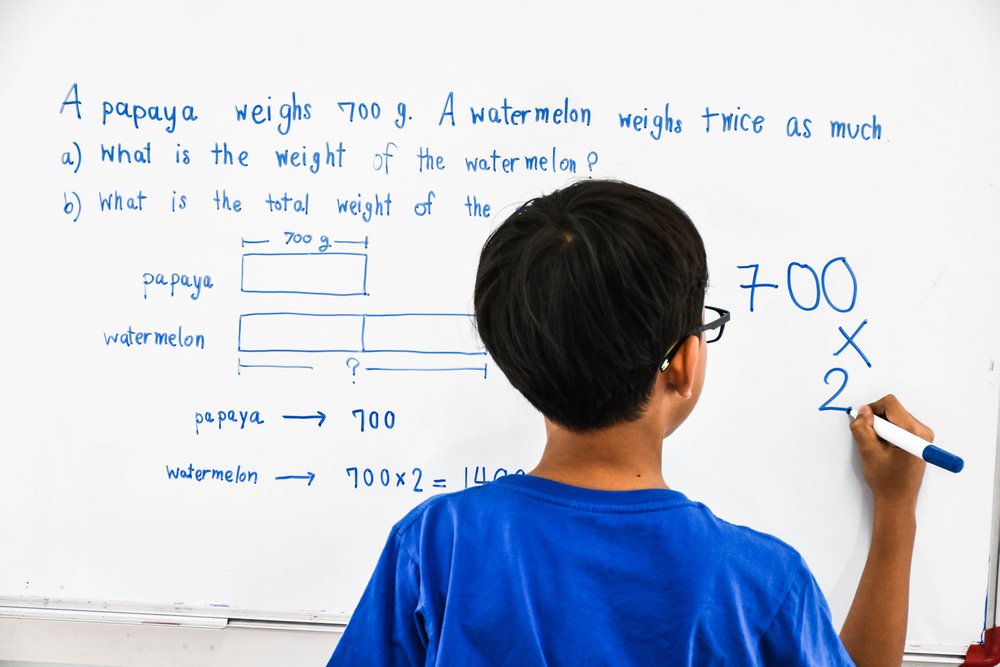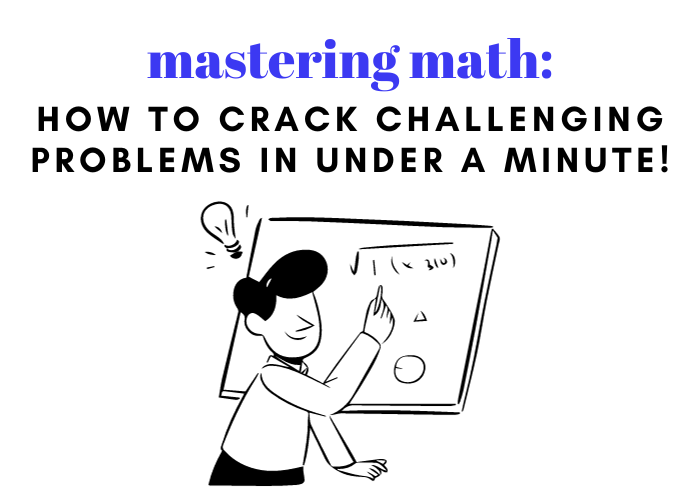

Last Updated on May 31, 2022
When I was a middle school teacher, I used to ask my students how their other classes were going and what they had learned that day. On the days they shared that their math lesson focused on word problems, the accompanying grumbles and groans were clear indicators that they were far from happy with that day’s lesson.
I used to wonder what it was that really irked my students about word problems. After all, the same students that grumbled and groaned were the ones that used procedural, analytical, and thinking skills in science, language arts, and social studies.
Not only did they use these skills in other classes, but many of these students used these skills incredibly well and successfully!
If my own students could easily write a response on the effects of colonialism in Latin America, something that requires them to use strong thinking skills, then why did they struggle to use similar thinking skills with math word problems? Or worse, why did they think it was hard to solve math word problems?
The trouble is that many students typically associate math with computational problems and ‘quick facts’. Some hold onto a perception that analytical and critical thinking skills should be saved for essays or lab reports.
This is definitely not the case!
A strong math curriculum emphasizes developing analytical and conceptual thinking skills in students. These types of math problems require students to carefully plan, solve, and then check their work.
Students want to quickly work through their math problems, which often means that they make careless mistakes or struggle to understand what the problem is asking them to solve.
This can lead to massive frustration and why many students vehemently vocalize that they, “hate math word problems”.
There are two ways to combat this animosity and boost confidence when tackling math word problems. One, by ensuring your child knows different strategies and problem-solving tricks. Two, by having them practice different types of word problems frequently.
Thinkster Math tutors work with many students who struggle with math word problems. Together, we’ve compiled a list of our favorite tips and practice questions that you can use with your child.
Before your child jumps in to try and solve a math word problem, they need to plan. This is often the step that students try and skip because they’re eager to finish their work quickly.
Not taking the time to carefully plan and dissect a word problem, though, can have your child feeling flustered when trying to solve it.
The planning process is incredibly important. It’s why authors take the time to outline and develop a plot before jumping in and writing a two hundred page novel. Planning allows for clarity and cohesive thoughts to develop.
This same planning process applies to math word problems.
As a first step, have your child identify what the problem is asking them to solve. Then, they should identify keywords and important details that are required to solve the problem. They can use highlighters, colored pencils, or even just a pen to underline or circle important information.

Identifying and understanding keywords and the order of operations in a word problem is a critical step!
Some kids also get confused by the different keywords and phrases used in word problems. In fact, some phrases might even have two meanings!
For example, using the words “increases by” could require using either addition or multiplication to solve the problem:
“There are 10 apples in a basket. The number of apples in the basket increases by 15. How many apples are there in all?”
“Johnny expects to pay $20 for his food, but the total bill increases by 7% because of tax. How much does Johnny need to pay?”
In the first word problem, your child simply adds 10 and 15 to get the answer. The second word problem requires multiplying $20 by 0.07, then adding that amount to $20.
These are two problems that use the same keyword, but require very different steps for solving!
This is why it’s great to practice keyword recognition with your child, and you can make flashcards for extra practice. For more helpful examples of keywords that your child should be able to identify, check out this link.
Encouraging your child to take the time to plan and organize their thinking by dissecting word problems helps them identify the details and operations required to solve. Finding this information helps your child as they start the next step of visualizing and illustrating the problem.
After your child identifies keywords within problems, the next step is to plan. There are many different types of strategies that your child can use. Creating illustrations, graphs, and diagrams are the most popular.
This is because many students are visual learners and benefit from using illustrations to help solve word problems. In fact, visual learners make up 65% of the students in a classroom.
Some math problems come with pictures or images for your child to refer to. For example:

This helps students learn and understand ways that they can organize their thinking to solve word problems.

Students also work with many word problems that do not come with any visuals or diagrams. This is why it’s a great idea to encourage your child to create their own images to help!
Here’s an example of how to use illustration to plan and solve a word problem:
There are 12 hens in a coop. Each hen lays 4 eggs a week. At the end of the week, Simon equally distributes and packs the eggs into 6 boxes. How many eggs are there in each box?
To solve this problem, your child will need to first calculate how many total eggs there are. Once they calculate 48 eggs (12 hens x 4 eggs each), they need to take this amount and divide it among 6 boxes. Your child can draw six boxes, then draw eggs into the boxes to visually represent how many eggs there are in each box.
Your child will develop strong problem-solving strategies as they grow accustomed to using charts and illustrations. This is also something that will help them as they tackle problems that involve patterns.
Another type of word problem that students encounter are problems with patterns.
For some students, these types of problems may seem difficult at first, especially if they are not taking the time to organize their thinking. But those that do take the time to use charts and visuals will find that there really is nothing to fear with pattern word problems!
Let’s try the following problem:
A bakery sells a different number of cakes each month. In March they sell 3 cakes, in April they sell 9 cakes, and in May they sell 27 cakes. If this pattern continues, how many cakes will they sell in July?
It’s not easy to try and figure out the answer mentally! This is why creating a chart helps students organize their thinking to reach the correct answer.

Once this information is displayed carefully, your child should be able to spot that they actually need to do two calculations. The word problem requires them to determine the number of cakes sold in July, but they can’t reach the answer without first determining how many cakes are sold in June.
Taking the time to carefully organize the data ensures that they do not miss this important step!
Here is another pattern word problem that you can have your child try to solve:
Robert adds chlorine tablets to a swimming pool every day to help keep it clean as more people come over to swim. On Monday he adds 3 tablets, on Tuesday he adds 5 tablets and on Wednesday he adds 7 tablets. If the pattern continues, how many chlorine tablets does he add on Thursday?
As your child solves the problem, make sure they underline keywords and important details, then organize their thinking with a chart! This is a great way to make sure they slow down when approaching the problem to minimize the risk of careless mistakes.
For students that try to sprint through solving word problems, distractors are often the reason they trip.
Which, quite honestly, is one of the reasons distractors are often thrown into word problems! They are meant to keep students on their toes and to ensure they are carefully reading what the problem is asking.
Distractors are words and information that are included in a problem, but really have nothing to do with it. It’s unnecessary information that students are expected to navigate around.
Thinkster Math CEO Raj Valli shares more on having students think on their feet with word problems that include distractors:
One tip that Thinkster tutors share with parents is to work on characterizing information and variables.
In the above video example, the problem requires students to determine how many fruits are in a basket. Characterizing all items in the basket and distinguishing between fruits and vegetables will ensure your child isn’t carelessly adding carrots into the final answer.
Here’s another example of a problem with a distractor that requires characterization:
A used car dealership has 91 cars and 29 trucks on the lot. Each day the dealership sells 13 cars. How many days would it take for all the cars to be sold?
A student that is rushing through the problem may add 91 and 29, then divide that amount by 13.
A student that takes the time to carefully dissect the problem will identify that there is a distractor.
As mentioned earlier, the first step is to understand what the word problem is answering. In this problem, your child needs to determine the number of days it takes to sell all cars at a dealership. By carefully characterizing the information, your child identifies that ‘29 trucks’ is information not needed to solve the problem.
Here is another word problem that you can have your child try solving:
Laura has invited 42 friends to her birthday. 18 friends are boys and 24 friends are girls. If she wants to give out 3 headbands to each of the girls, how many headbands will she have to buy?
Is your child able to pick out that “18 boys” is information not needed to solve the problem?
Having your child practice problems with distractors helps them spot this more quickly!
Along with following our tips and recommendations, one of the best ways for your child to grow more comfortable with solving word problems is by practicing.
A combination of exposure to different types of word problems along with frequent practice will help shift your child’s mentality when they tackle word problems. They should reach a point where they are no longer struggling, and instead have strong confidence when presented with a problem to solve.
While you can take the time to create your own word problems, there are online and digital tutoring programs, like Thinkster Math, that ensure your child is exposed to many different types of logical reasoning and critical thinking problems.

Thinkster Math’s world-class curriculum is packed with word problems!
We begin introducing word problems in our first-grade curriculum, which is on par with when students begin learning word problems in school. Introducing word problems at a young age ensures your child is developing strong problem-solving skills.
Thinkster also includes many real-world examples. Anchoring to real situations helps students understand and appreciate why they are solving word problems. It can also help them visualize what the problem is by asking them to solve it more easily.
Whether your child is grumbling and groaning about word problems at school or at home, it’s time to squash any frustration and animosity toward math word problems!
There are a few things that you can do at home to help your child grow more comfortable with word problems. Have them organize their thinking by marking problems with highlighters and work on keyword recognition.
It’s important to also have your child try different types of word problems so that they feel more prepared and ready to tackle what they’ll be learning in school! Try problems with and without visuals, patterns, and distractors to give them balanced preparation.
And remember, daily practice with a program like Thinkster Math can help! The combination of practice, video tutorials, and customized feedback can have your child become more confident in their ability to use using problem-solving strategies, and you will see incredible learning improvements in less than three months.
You can explore our curriculum and try more sample problems similar to the ones shared in this blog.
If you’re looking for to help your child, you can try Thinkster risk-free.
Thinkster provides a full-fledged platform (driven by AI, behavioral, and data science), as well as supplemental , help, , and more. Our Parent Insights App allows you to monitor your ‘s work and improvements at any time.
An elite, and system work together to help your go beyond just – we want them to master it.
Learn more about our curriculum and teaching style here.


